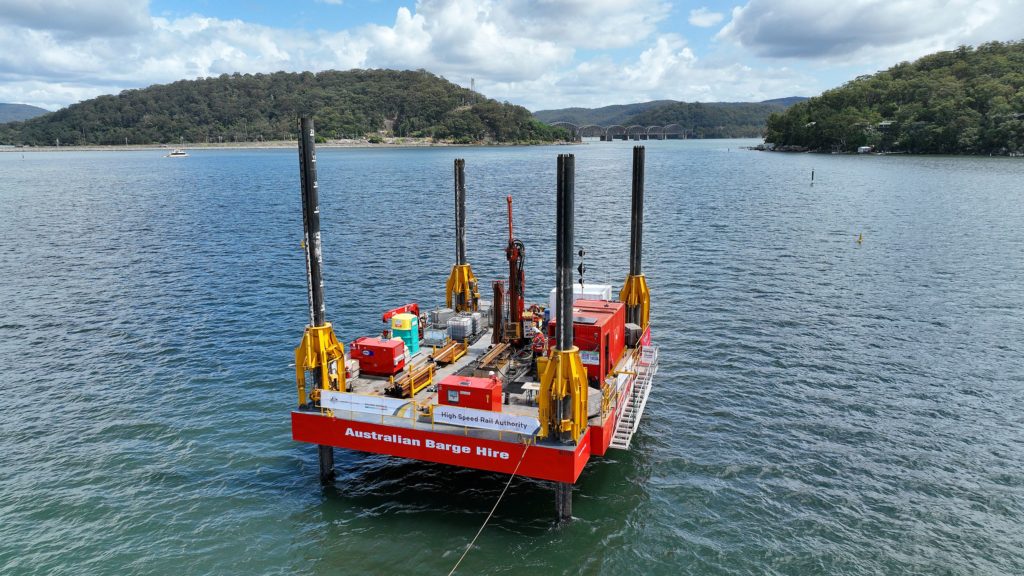CCN INVESTIGATIONS: Tunnels under Brisbane Water and the Hawkesbury River could form part of the proposed 30-minute high-speed rail link between the Central Coast and Sydney.
Two drill rigs have been working on both waterways in recent weeks as part of geotechnical investigations to determine the optimum route alignment.
They will drill six boreholes, some to a depth of 140 metres, with the barge on the Hawkesbury River to operate for about two months.
High Speed Rail Authority (HSRA) CEO Tim Parker said underwater tunnels could well be the way to go, with the alternative of land tunnels problematic.
“To create the M1 we had to literally cut through mountains,” he said.
“Whilst expensive, (underwater tunnels) could be the most expedient solution.”
Rock and sediment samples collected by the barges will be analysed, with the results helping inform construction methods and key details such as the design and depth of the potential rail tunnels.
The geotechnical work – which involves about 27 boreholes in key areas between Newcastle and Sydney – helps with planning for rail tunnel depths, recognising the geological complexities of traversing the escarpment into the Central Coast and on to Sydney and Newcastle.
The Sydney-Newcastle section is stage one of a high-speed rail network planned to connect Brisbane, Sydney, Canberra, Melbourne and regional communities across the east coast of Australia.

The Federal Government has committed $500M for the planning and corridor protection of this first section and established the HSRA to conduct the work.
The business case for the Newcastle to Sydney stage is due to be delivered to the Government by the end of this year.
Infrastructure, Transport, Regional Development and Local Government Minister Catherine King said a high-speed network would create more jobs in more locations and give people greater choices in where they live, work, study and play.
“Our transformational investment in high-speed rail will help shape Australia for decades to come,” she said.
Parker said journeys will be reliable, quick, convenient and comfortable.
“Right now, we’re working on how to build a new railway in complex areas and the engineering challenges we would face,” he said.
Terry Collins
Related CCN articles
Geotechnical investigation underway for high-speed rail
First key milestone for high-speed rail
High-speed rail plan for Central Coast line on track
Calling for industry input on high-speed rail
Albanese pledges to build the nation’s first high speed rail through the Central Coast






do I detect an election in the air?